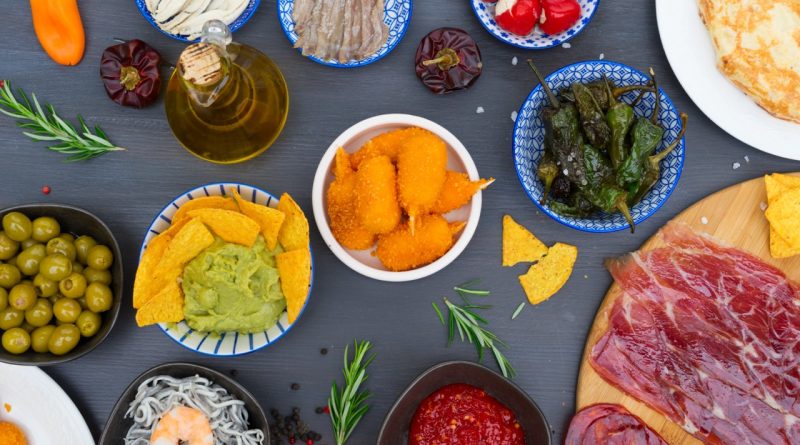A Beginner’s Guide to Cooking International Cuisine at Home
Exploring the rich tapestry of international cuisines can be an exciting journey, especially for those new to cooking. With diverse flavors, techniques, and ingredients, global cooking offers a chance to expand your culinary horizons right from the comfort of your home. This beginner’s guide will provide you with an understanding of international cuisines, essential tools and ingredients, simple recipes, and tips for achieving authentic flavors. Get ready to embark on a delicious adventure!
Understanding International Cuisines: An Overview for Beginners
International cuisines encompass a wide range of culinary traditions that reflect the culture, history, and geography of different countries. From the bold spices of Indian cuisine to the delicate flavors of Japanese dishes, each cuisine offers a unique perspective on cooking. Understanding these traditions can enhance your appreciation for the food and inspire you to experiment in your kitchen.
Many international cuisines are defined by their staple ingredients, cooking methods, and regional specialties. For example, Mediterranean cuisine often emphasizes fresh vegetables, olive oil, and grains, while Latin American food frequently features corn, beans, and chilies. By familiarizing yourself with these foundational elements, you can better grasp the characteristics that make each cuisine distinctive.
As a beginner, a great way to start exploring international cuisines is to focus on a specific region or country at a time. Researching the cultural background and common dishes of that area can provide context and enrich your cooking experience. This approach will help you build a foundational knowledge of flavors and techniques before expanding your repertoire to include a wider array of global dishes.
Essential Ingredients and Tools for Global Cooking Success
To successfully cook international cuisine at home, having the right ingredients and tools is crucial. Begin with a well-stocked pantry that includes essentials such as rice, pasta, beans, and a variety of spices. Common spices like cumin, coriander, turmeric, and paprika can serve as the backbone for many dishes across different cuisines. Don’t shy away from specialty ingredients, either; items like miso paste, fish sauce, or coconut milk can elevate your cooking and introduce you to authentic flavors.
In addition to pantry staples, consider investing in essential cooking tools. A sharp chef’s knife, cutting board, and a variety of pots and pans will cover most cooking needs. Specific tools may be beneficial for certain cuisines—such as a wok for Asian dishes or a tagine for North African recipes. Having the right equipment can make the cooking process smoother and more enjoyable, allowing you to focus on mastering new techniques.
Lastly, familiarize yourself with cooking methods that are fundamental to various cuisines. Techniques such as sautéing, braising, and steaming may differ in execution but share common principles. Understanding these methods will give you confidence in your ability to tackle recipes from around the world and help you adapt them based on the ingredients you have on hand.
Step-by-Step Recipes: Easy Dishes from Around the World
To kickstart your international cooking journey, here are some easy recipes to try. Begin with a classic Italian dish: Spaghetti Aglio e Olio. This simple yet flavorful recipe requires just spaghetti, garlic, olive oil, and red pepper flakes. Sauté minced garlic in olive oil, toss in cooked spaghetti, and finish with a sprinkle of red pepper flakes for a quick meal that celebrates Italian cuisine.
Next, venture into Mexican cooking with Tacos. Use corn tortillas and fill them with ingredients such as seasoned ground beef, black beans, or grilled chicken. Top with fresh salsa, avocado, and cilantro for a delightful dish that showcases the vibrant flavors of Mexico. Tacos are versatile and allow for endless variations based on your taste and dietary preferences.
Finally, try your hand at a comforting Indian dish: Vegetable Curry. Sauté onions and garlic, add a mix of spices such as turmeric and garam masala, and incorporate your choice of vegetables and coconut milk. Serve this aromatic curry with rice or naan for a satisfying meal. These dishes are not only simple but also encourage you to explore the diverse flavors and techniques characteristic of international cuisine.
Tips for Creating Authentic Flavors in Your Home Kitchen
To achieve authentic flavors in your international cooking, start with high-quality ingredients. Fresh herbs, spices, and produce can significantly enhance the taste of your dishes. Make an effort to shop at local markets or specialty stores where you can find ingredients that might not be available at your regular grocery store. This can open up new possibilities and elevate your cooking.
Another essential tip is to take your time with the cooking process. Many international dishes benefit from slow cooking, allowing flavors to develop and meld together. For example, stews and braises often taste better when simmered for an extended period. Don’t rush; give yourself the space to appreciate the cooking experience and enjoy the aromas that fill your kitchen.
Lastly, don’t hesitate to experiment and adjust recipes to suit your palate. Authenticity doesn’t have to mean strict adherence to traditional methods or ingredients. Feel free to substitute or add ingredients that reflect your personal taste while honoring the essence of the dish. Cooking is an art, and your unique touch can bring new life to classic recipes, transforming them into something that feels personal and genuine.
Cooking international cuisine at home is an enriching experience that allows you to explore different cultures through food. By understanding the fundamentals of global cuisines, preparing with essential tools and ingredients, and following easy recipes, you can create delicious meals that transport you and your loved ones to distant lands. With practice and a willingness to experiment, you will gain confidence in your kitchen and develop a deeper appreciation for the diverse world of culinary traditions. Happy cooking!
